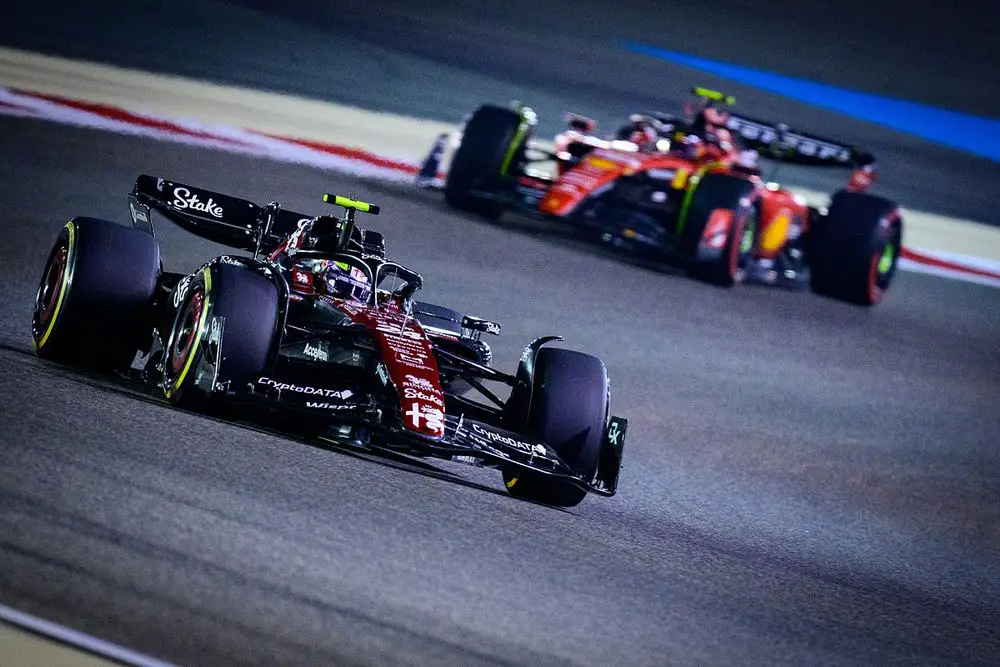Formula 1 is a sport where every fraction of a second counts. The difference between winning and losing can be determined by the smallest of margins. That’s why f1 qualifying is such a crucial part of the F1 weekend. It decides the starting order for the race and gives the drivers an opportunity to show their speed and skill.
- How do F1 teams qualify fastest?
- What are the factors that influence their performance and strategy?
- Why are qualifying times faster then in the main race?
In this article, we will explore the process and the challenges that F1 teams face in qualifying, and how they try to optimize their chances of securing pole position and a good grid slot.
F1 Qualifying Format
Under the traditional format Formula 1 qualifying is a knockout system that consists of three sessions: Q1, Q2 and Q3. Each session lasts for a certain amount of time and eliminates the slowest drivers until only 10 remain for the final shootout in Q3. The format is as follows:
| Session | Duration | Number Of Drivers In Each Session | Number Of Drivers Eliminated Per Round |
|---|---|---|---|
| Q1 | 18 min | 20 | 5 |
| Q2 | 15 min | 15 | 5 |
| Q3 | 12 min | 10 | 0 |
The drivers have to set their fastest lap times within the session time limit, using only soft tires. The fastest driver in Q3 gets pole position and receives three points for the championship. The second-fastest driver gets two points and the third-fastest driver gets one point. The rest of the grid is determined by the order of the lap times in each session.
Why Are F1 Qualifying Lap Times Faster Than The Main Race?
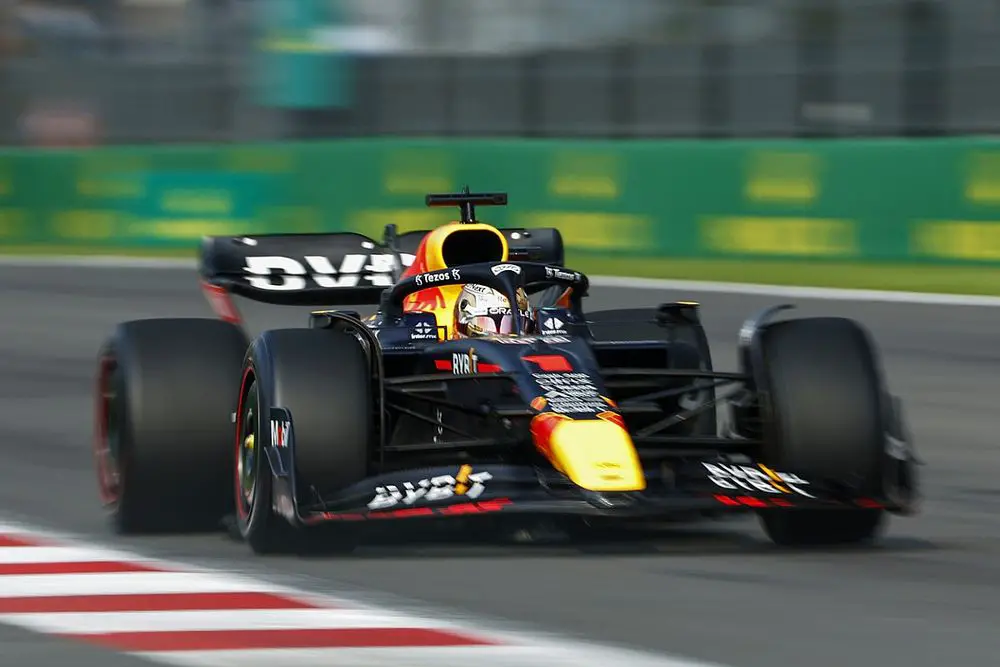
The main reason that F1 qualifying lap times are faster than the main race is that in qualifying they run with the minimum quantity of fuel.
The fuel for a qualifying session is only required to do 2 or 3 laps. At the start of the race they have a little over 100kg on board which they need to complete the race.
This 100kg of fuel is a substantial fraction of the car’s total mass.
Less Fuel Means Faster F1 Qualifying Lap Times
The rule of thumb is that every 10kg of fuel costs about 0.3s of lap time so cars can be something like 3 seconds a lap slower just because of the mass of fuel.
In qualifying the driver and team will try to extract the absolute maximum performance for the car for one fast lap. This places high loads on the engine and tires which generally can’t be sustained for an entire 2 hour race.
Equally driver will try to be on the absolute limit for qualifying laps, this carries an increased risk of errors and that risk/reward calculation can change for a 50 lap race compared to one lap.
Tire Choice Affects F1 Qualifying And Race Speeds
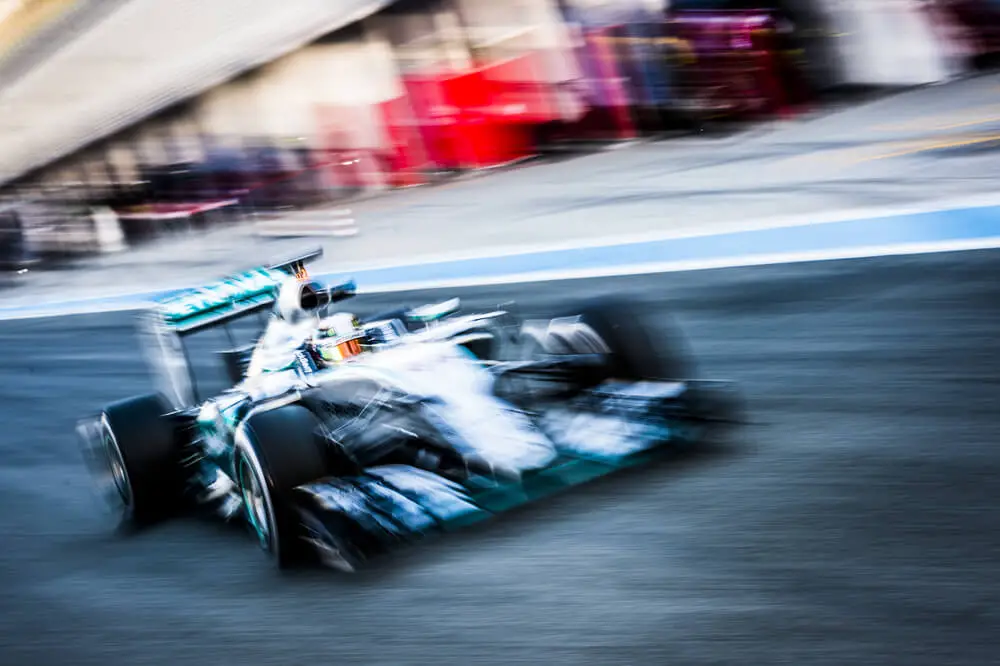
There are several different dry weather tire compounds available per race weekend each with a different balance of performance vs durability.
The current F1 tires usually give best performance when nearly brand new (although they may be given one or two fairly gentle laps the day before as a heat cycle can make them work better).
Qualifying tends to use all of the softest tires which means that most of the team’s stock of soft tires have run at least one hard lap before the race starts. In Qualify the teams can mask a car’s weaknesses with new tires grip much better in only one lap in qualifying,
Teams a make a calculation on tire strategy, changing tires costs time (usually about 20 seconds overall) and so sometimes it is better to drive a bit more conservatively and pit at a more advantageous time to improve the overall race time.
The Traffic Conditions Affect Qualifying
Traffic conditions refer to the presence of other cars on the track during qualifying and in the main race. Traffic can affect the performance and strategy of the drivers in several ways.
Traffic Can Slow A Car Down
During a race driver needs to deal with other cars, if they are behind a slower car they may be held up, the lines used for attacking and defending tend to be slower than the optimum on a clear track.
Plus the turbulence produced by cars in front tends to disturb aerodynamics and cooling adversely affecting performance.
This can ruin his chances of setting a good time or force him to abort his lap and try again. F1 drivers have to avoid traffic as much as possible by finding a clear space on the track or overtaking slower cars.
Traffic Can Help A Following Car Go Faster
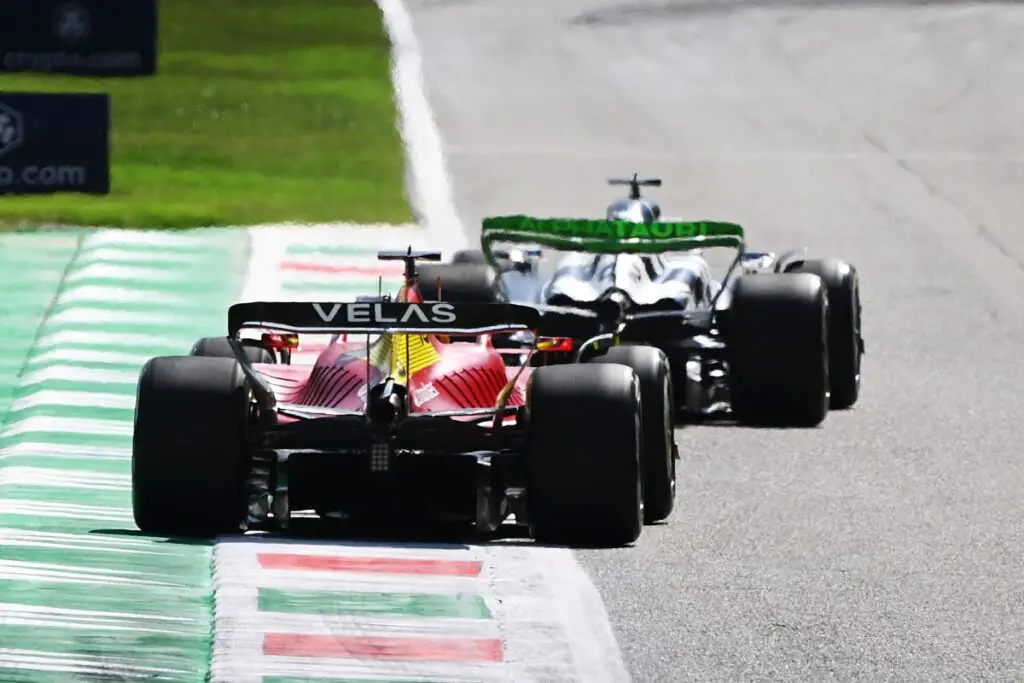
Traffic in a qualifying session can also help a driver’s flying lap by giving him a tow or a slipstream. This is when a driver follows closely behind another car and benefits from its aerodynamic wake, which reduces drag and increases speed.
F1 drivers often use this technique with their team mate to gain an advantage on long straights or fast corners.
Third, traffic can affect a driver’s strategy by influencing his timing and tire choice. F1 drivers have to decide when to go out for their qualifying runs based on the track conditions and traffic situation. They also have to choose which tire compound to use based on their expected position on the grid.
F1 Qualifying Aero Setup
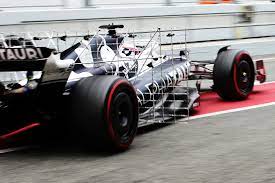
Aero setup refers to the configuration of the aerodynamic elements of an F1 car, such as the front wing, rear wing, bargeboards and floor. These elements generate downforce, which pushes the car onto the track and increases its cornering speed. However, they also create drag, which reduces its straight-line speed.
F1 teams have to find the optimal balance between downforce and drag for each track. Some tracks require more downforce for better cornering stability, while others require less drag for higher top speed. For example, Monaco is a high-downforce track with many tight corners and short straights, while Monza is a low-drag track with long straights and few corners.
Teams are allowed to adjust the car setup a bit in qualifying. If teams think they can get a better time in qualifying by adjusting wing/downforce setup, they can do that.
For qualifying, teams usually opt for a higher-downforce setup than for the race. This is because they want to maximize their lap time by having more grip in the corners. However, this also means they will have less speed on the straights and more tire wear.
The Track Conditions
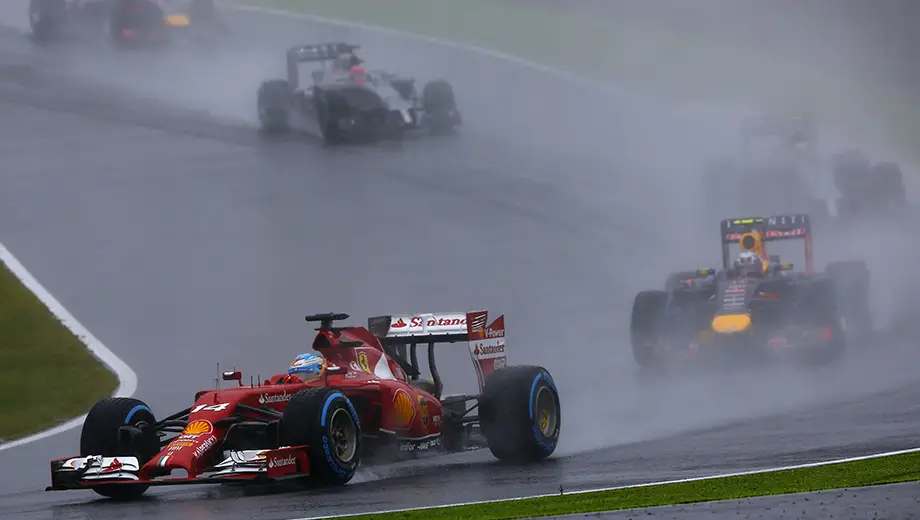
Track conditions refer to the state of the track surface and its surroundings. They can vary depending on factors such as temperature, humidity, wind, rain and rubber deposits. These factors can affect the grip level, tire performance and car behavior.
F1 teams have to adapt to changing track conditions throughout the weekend. They have to collect data from practice sessions and analyze how their car performs under different scenarios. They also have to anticipate how the track will evolve during qualifying and adjust their setup accordingly.
One of the main challenges in qualifying is finding the best track conditions to set a fast lap time. This depends on several factors:
- Track temperature: Higher temperatures increase tire grip but also tire degradation.
- Air temperature: Higher temperatures reduce air density and engine power but also drag.
- Humidity: Higher humidity reduces engine power but also tire wear.
- Wind: Wind can affect the aerodynamic balance and stability of the car, especially in high-speed corners.
- Rain: Rain reduces grip and visibility and requires wet tires.
- Rubber: Rubber deposits from previous sessions increase grip but also tire wear.
F1 teams have to monitor the track conditions closely and decide when to go out for their qualifying runs. They have to choose the optimal window when the track is at its fastest and avoid traffic from other cars.
The Out Lap
The out lap is the lap that the drivers do before starting their flying lap, which is the lap that counts for their qualifying time. The out lap is crucial for preparing the tires, brakes and engine for the flying lap.
The tires have to be brought up to their optimal temperature and pressure range, which varies depending on the compound and track conditions. If the tires are too cold, they will lack grip and cause understeer or oversteer. If the tires are too hot, they will lose grip and cause sliding or blistering.
The brakes have to be warmed up as well, as they affect the tire temperature and pressure. If the brakes are too cold, they will not work effectively and cause locking or flat-spotting. If the brakes are too hot, they will overheat and fade.
The engine has to be primed for maximum performance, as it affects the power output and fuel consumption. If the engine is too cold, it will not deliver its full potential and cause hesitation or misfiring. If the engine is too hot, it will lose power and efficiency.
F1 drivers have to manage their out lap carefully and find the right balance between warming up their car and saving their tires. They have to use different techniques such as weaving, braking, accelerating and coasting to achieve this.
The Data F1 Teams Analyse to Qualify Fastest
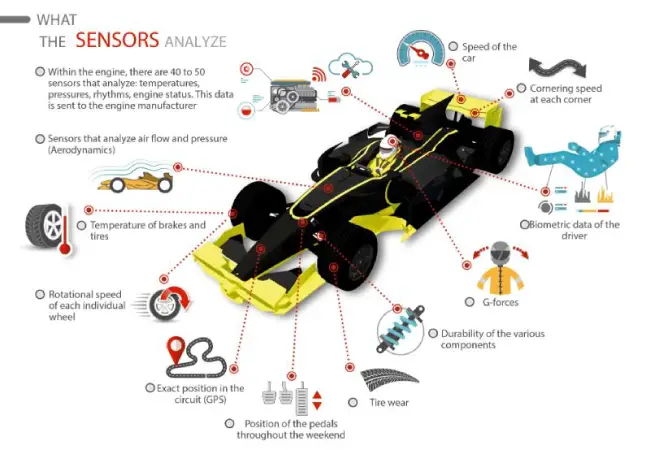
Formula 1 is a data-driven sport, where teams collect and analyze huge amounts of information to gain a competitive edge. Data analysis is essential for every aspect of F1, from designing and developing the car to planning and executing the race strategy. Qualifying is no exception, as teams use data to optimize their performance and secure the best possible starting position for the race.
But what data do F1 teams analyze to qualify fastest? What are the sources and types of data that they use? How do they process and interpret the data to make informed decisions? In this article, we will explore some of the key data that F1 teams analyze to qualify fastest, and how they use it to improve their chances of success.
The Car Data

The car data is the data that comes from the sensors and systems on board the F1 car. It includes parameters such as speed, acceleration, braking, steering, gear, throttle, tyre pressure, temperature, fuel level, engine power, aerodynamics and more. The car data is transmitted in real time via telemetry to the team’s garage and factory, where engineers and analysts monitor and evaluate it.
The car data is vital for qualifying, as it allows teams to assess the performance and condition of the car, and identify any issues or areas for improvement. It also helps teams to fine-tune the car setup for each track and each session, by adjusting variables such as suspension, wing angle, brake balance, tyre pressure and more.
The car data also enables teams to compare their performance with their rivals, by using tools such as GPS tracking and sector times. This way, teams can see where they are gaining or losing time on the track, and where they can improve their lap time.
The Driver Data
The driver data is the data that comes from the driver’s actions and feedback. It includes parameters such as lap time, sector time, delta time, position, track position, overtakes, mistakes, radio messages and more. The driver data is also transmitted in real time via telemetry to the team’s garage and factory, where engineers and analysts monitor and evaluate it.
The driver data is crucial for qualifying, as it allows teams to assess the performance and condition of the driver, and identify any issues or areas for improvement.
It also helps teams to optimize the driver’s strategy and tactics for each session, by advising them on the following.
- When to go out for their runs.
- How to manage their tires and fuel.
- How to deal with traffic.
- What weather conditions can be expected.
- How to find a tow or a slipstream from another car/
- How to avoid mistakes or penalties and more.
The driver data also enables teams to compare their performance with their rivals, by using tools such as lap charts and gap analysis.
This way, teams can see where they are faster or slower than their competitors, and where they can gain or lose positions on the grid.
The Track Data
The track data is the data that comes from the track surface and its surroundings. It includes parameters such as temperature, humidity, wind speed and direction, rain intensity and duration, rubber deposits and more.
The track data is collected by various sources such as weather stations, radar systems, cameras and sensors around the track.
The track data is important for qualifying, as it allows teams to adapt to changing track conditions throughout the weekend.
It also helps teams to predict how the track will evolve during qualifying and adjust their setup accordingly.
The track data also enables teams to compare their performance with their rivals, by using tools such as sector analysis and corner analysis. This way, teams can see where they are gaining or losing time on different parts of the track, and where they can improve their driving style or line.
Conclusion
F1 qualifying is a complex and challenging process that requires speed, skill and strategy from both drivers and teams. It involves many factors that can make or break a driver’s chances of securing a good starting position for the race. F1 qualifying is also a thrilling spectacle that showcases the best of F1 racing.

